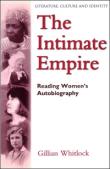 3728855783846393211.jpg
3728855783846393211.jpg
 3728855783846393211.jpg
3728855783846393211.jpg
Chapter 5, entitled 'Autobiography and Resistance', contains sections on Aboriginal Australian women's autobiography (see especially pp. 154-165).
Includes select bibliography and index.
Contents :
- 1 Autobiography and slavery: Believing the History of Mary Prince
Black and white
The 'history' of Mary Prince
Marginalia: oppositional reading
Mr Pringle: editor
Miss Strickland: the 'other' woman
Authorization: reading the body of the slave
Volatile bodies
The return of Mary Prince
- 2 Settler subjects
Blood and milk: Roughing It in the Bush
Colonizer and colonized
Grosse Isle, summer 1832
Emigration in the time of cholera
Conduct books: The Backwoods of Canada
Autobiography and adjacency: Mr and Mrs Moodie
Domesticity: the race made flesh
- 3 Travelling in memory of slavery
Britannia's daughters
Jamaica: the legacy of the plantation
The Wonderful Adventures of Mrs. Seacole
Creole travelling
Mary Gaunt: writing a master narrative
The Buckra lady
Romance and slavery
- 4 Kenya: The land that never was
Finding Karen Blixen
Quartet; Blixen, Simpson, Markham and Huxley
Dystopian autobiography: The Land That Never Was
Autobiography at Independence: :The Flame Trees of Thika
Out of Africa: the biography of the white hunter
The new pioneer: West with the Night
Smoke and mirrors
- 5 Autobiography and resistance:
Reading across the South
Autobiography after Soweto
Call Me Woman
Black Australian autobiography
Sally Morgan and Ruby Langfrd Ginibi: the making
of Aboriginality
Black writers/white readers
Bodiless women
- 6 In memory of the colonial child
Autobiography and utopia
A Childhood Perceived: Penelope Lively
Under My Skin: Doris Lessing
Rhodesia: the lost world
Accessing the past
Reading across the Straits
Connected reading: the agency of the reader